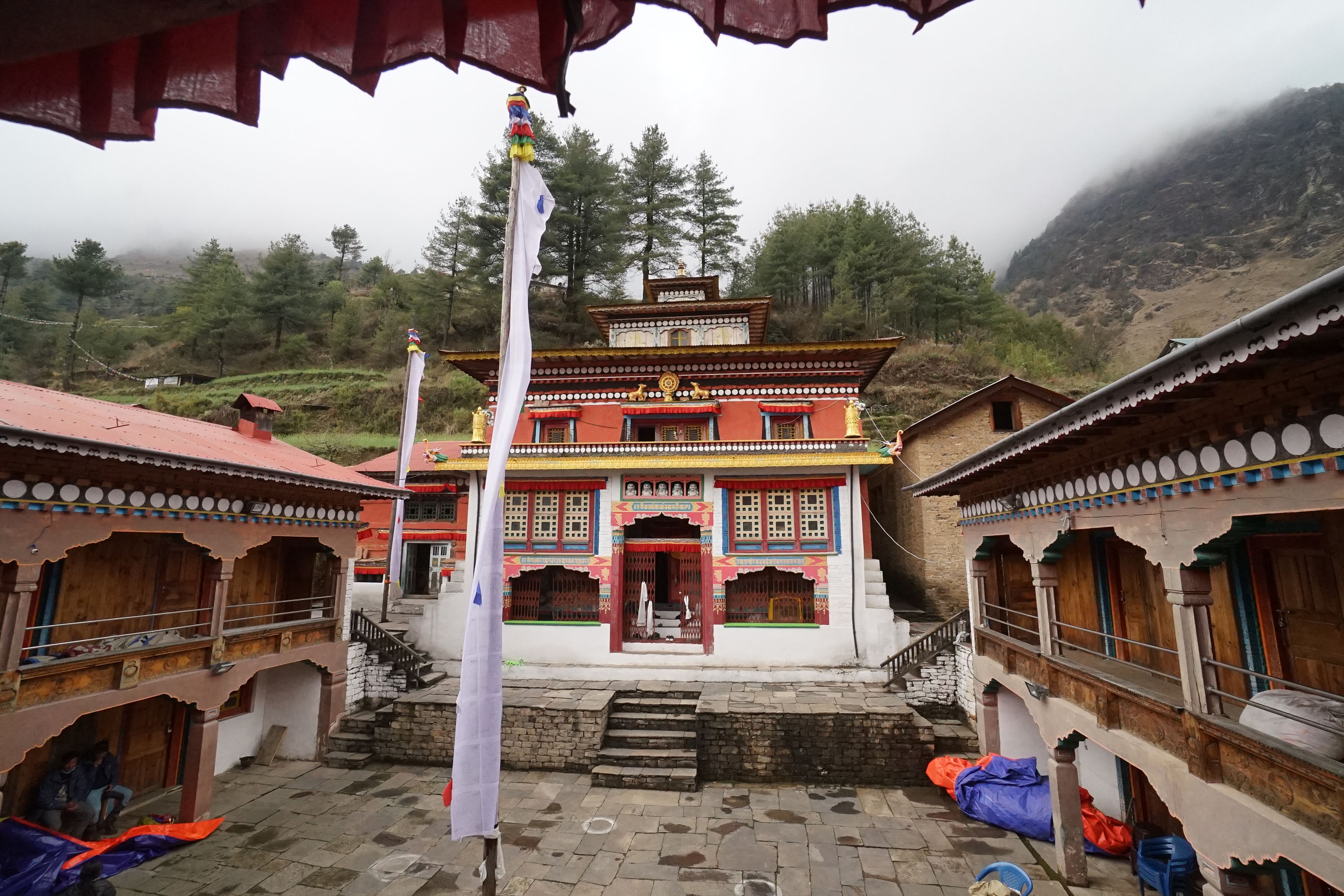Tashi Thongmon Gumbā, Junbesi

Tashi Thongmon Gumbā in Junbesi (Dudhkunda, Solukhumbu) is considered to be the oldest Sherpa monastery. Junbesi was the first permanent settlement of the Sherpa people after they crossed over from Tibet in the early 16th century. The original monastery probably dates to that time. Other sources mention 1635 as the construction date. The monastery was damaged by an earthquake in the 17th century and partly destroyed by fire in 1914.. In 2007, the historic courtyard building was demolished and rebuilt as a stone and concrete structure covered with a corrugated metal roof. Recent renovations also include the replacement of the timber-framed entry porch with a cement and concrete portico.
The three massive clay statues of Buddha Śākyamuni, Maitreya and Padmasambhava are replacements that were made after the 1914 fire. Local lore has it that the original statues escaped the fire by flying away to an undisclosed location. The upstairs room features a niche with a group of smaller statues representing Buddha Śākyamuni, Maitreya, Padmasambhava, Śāriputra and Maudgalyāyana amongst others. The Gumbā houses sets of the Kangyur and Tengyur texts.
The Gumbā is privately owned by a number of Sherpa families but looked after by the Serlo Monastery. A resident monk is deputed to arrange for necessary rituals and opens the Gumbā for visitors and pilgrims. The monk also runs a small monastery gift shop in the new building. During the yearly Dumje festival, the birth of Guru Rinpoche is celebrated and dances performed in the courtyard.
For more information about Tashi Thongmon Gumbā, please visit DANAM.
